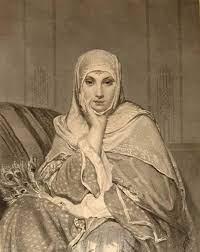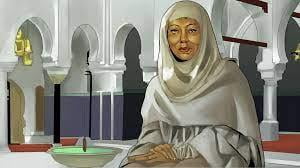Patricia Maude Young
During her lifetime, Fatima was called the “mother of boys”. According to historian Mohammed Yasser Hilali, “this nickname probably stems from her charity and the fact she took students under her wing.”
From the 10th century the famous mosque of al-Qarawiyyin became the first religious institute and the largest Arab university of North Africa. It attracted a lot of students and renowned scientists.
The University of al-Qarawyyin is considered the most ancient university in the world still operating, preceding the first European universities. This is according to UNESCO and Guinness World Records. The date of reference is the year al-Qarawiyyin was founded as a mosque, which implies that its educational character goes back to its beginnings.
This is the story of a strong Muslim woman, who was an obvious trailblazer. Fatima should be remembered as one who saw the importance of educating the world, and whose leadership was immense.
800
880
Kairouan, Aghlabid Emirate
Fatima was born around 800 in the town of Kairouan in present day Tunisia. She is of Arab Qurayshi descent, hence the nisba l-Qurashiyya, ‘the Qurayshi one’. Her family was part of a large migration to Fez from Kairouan.
859 AD – founding of the al-Qarawiyyin mosque in Fez, Morocco. Fatima used the money she inherited from her father to purchase a mosque that was built around 845, under the supervision of King Yahya ibn Muhammad. She then rebuilt it and bought the surrounding land, doubling its size. The mosque took 18 years to construct.
Fatima was born in approximately 800 CE in Tunisia. She lived there for some years, before moving to Fez, Morocco, with her family. Her father Mohammed Al Fihri became a successful businessman and when he died Fatima inherited her father’s wealth.
The university graduates include several poets, Faqîhs (Muslim jurist), astronomers and mathematicians from all over the region. Famous names are those of historian Abdurahman Ibn Khaldun, the doctor and philosopher Abu Walid Ibn Rushd, the Andalusian doctor Musa Ibn Maimonou and Gerbert of Aurillac, who became Pope Sylvester II.
Fatima al-Fihri herself is considered a saint and she is much respected among the believers especially in Fez. In 2017, a prize was created in Tunisia in her honour. It rewards initiatives which encourage access to training and professional responsibilities for women. Furthermore, an academic programme and a scholarship given to students from Europe and North Africa pay tribute to Fatima al-Fihri.
Al-Fihri was married, but both her husband and father died shortly after the wedding. Her father left his wealth to both Fatima and her sister, his only children. She and her sister Maryam were well educated and studied the Islamic jurisprudence Fiqh and the Hadith, or the records of Prophet Muhammed. Both went on to found mosques in Fez. Fatima founded Al-Qarawiyyin and Maryam founded Al-Andalus. Fatima’s foresight and commitment, alongside her selfless contribution towards championing intellectual advancement, led to the establishment of a monumental university. The remarkable legacy of her dedication and empowering endeavour is well-deserved and one that is a source of inspiration for all.
Links to wider Resources:
https://en.wikipedia.org/wiki/Mosque_of_the_Andalusians
Credits (where info sourced from)
Fatima al-Fihri: Founder of the world′s oldest university | African Roots | DW | 08.05.2020
Meet Fatima al-Fihri: The founder of the world’s first Library – Ventures Africa
Al-Qarawiyyin University in Fes: Brainchild of a Muslim Woman (insidearabia.com)




